Rock is an umbrella term and defines a musical genre of popular music that developed during and after the 1950s. Its roots lie in rock and roll and rockabilly that emerged and defined themselves in the United States in the late 1940s and early 1950s.
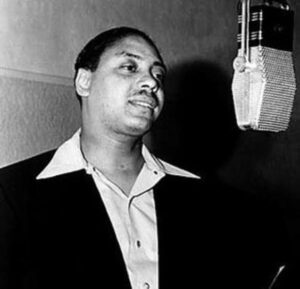
Who, in turn, evolved from the blues, country music, and rhythm and blues.
Other musical influences on rock still include folk, jazz and classical music. All of these influences were combined into a simple blues-based musical structure that was “fast, danceable and catchy”. In the late 1960s and early 1970s, rock developed different subgenres.The rock sound often revolves around the electric guitar or acoustic guitar and uses a strong backbeat established by the rhythm of the electric bass, drums, keyboard, and other instruments such as organ, piano, or since the 1970s, digital synthesizers. Along with the guitar or keyboard, the saxophone and harmonica are sometimes used as solo instruments.
Rock and roll quickly spread to the rest of the world. In the beginning, the new rock style suffered a lot of negative reviews and some positive ones.
There is a lot of discussion about what should be considered the first rock & roll recording. Big Joe Turner would have been one of the forerunners in a 1939 album, Roll ‘Em Pete, which is very close to fifties rock and roll, as well as Sister Rosetta Tharpe, who hit the pop charts in 1938 with her gospel songs like This Train and Rock Me, and in 1940 with Strange Things Happenin’ Every Day, Up Above My Head, and Down by the Riverside.
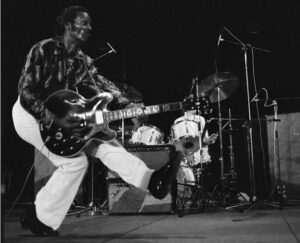 Other important records from the 1940s and 1950s were Roy Brown’s Good Rocking Tonight (1947), Hank Williams’ Move It On Over (1947), Amos Milburn’s Chicken Shack Boogie (1947), Jimmy Preston’s Rock the Joint (1947), Albert Ammons’ Boogie Woogie Dream, Fats Domino’s The Fat Man (1949), and Les Paul and Mary Ford’s How High the Moon (1951). Bill Haley’s “Rock Around the Clock” became the first rock and roll song that topped Billboard’s sales and plays chart and paved the way worldwide for this new wave of popular culture. But a 2004 issue of Rolling Stone magazine argued that 1954’s “That’s All Right,” Elvis Presley’s first single (with Scotty Moore on guitar and Bill Black on bass) for Sun Records in Memphis was the first rock and roll record in history and the creation of Sun Records’ signature rockabilly sound. Other artists who released early rock and roll hits were Chuck Berry, Bo Diddley, Fats Domino, Little Richard, Jerry Lee Lewis, and Gene Vincent.
Other important records from the 1940s and 1950s were Roy Brown’s Good Rocking Tonight (1947), Hank Williams’ Move It On Over (1947), Amos Milburn’s Chicken Shack Boogie (1947), Jimmy Preston’s Rock the Joint (1947), Albert Ammons’ Boogie Woogie Dream, Fats Domino’s The Fat Man (1949), and Les Paul and Mary Ford’s How High the Moon (1951). Bill Haley’s “Rock Around the Clock” became the first rock and roll song that topped Billboard’s sales and plays chart and paved the way worldwide for this new wave of popular culture. But a 2004 issue of Rolling Stone magazine argued that 1954’s “That’s All Right,” Elvis Presley’s first single (with Scotty Moore on guitar and Bill Black on bass) for Sun Records in Memphis was the first rock and roll record in history and the creation of Sun Records’ signature rockabilly sound. Other artists who released early rock and roll hits were Chuck Berry, Bo Diddley, Fats Domino, Little Richard, Jerry Lee Lewis, and Gene Vincent.
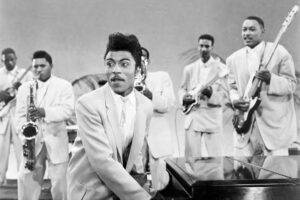
The 1950s saw the growth in popularity of the electric guitar and the development of a rock and roll style specifically played by such exponents as Berry, Link Wray and Scotty Moore. It also saw major advances in recording technology, such as multi-track recording developed by Les Paul and electronic sound processing by innovative music producers like Joe Meek. All these advances were fundamental to theinfluence of rock later. The social effects of rock and roll were massive and worldwide.
Far beyond a simple musical style, rock and roll influenced lifestyles, fashion, attitudes and language.
Some believe the new genre might have helped the cause of the civil rights movement in the US, because both white and black youth enjoyed the new music.
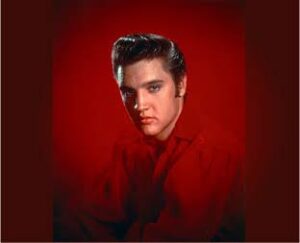 However, by the early 1960s, much of the initial musical impulse and social radicalism of rock and roll had dissipated, with the rise of teen idols, an emphasis on frenzied dancing, and the development of light teen pop music. In the 1960s, the Motown sound emerged. From 1961 to 1971, there were 110 songs on the label’s Top 10 Playlists, and artists such as Stevie Wonder, Marvin Gaye, The Supremes, The Four Tops, and The Jackson 5 all recorded at Motown. All five Motown artists were inducted into the Rock and Roll Hall of Fame.
However, by the early 1960s, much of the initial musical impulse and social radicalism of rock and roll had dissipated, with the rise of teen idols, an emphasis on frenzied dancing, and the development of light teen pop music. In the 1960s, the Motown sound emerged. From 1961 to 1971, there were 110 songs on the label’s Top 10 Playlists, and artists such as Stevie Wonder, Marvin Gaye, The Supremes, The Four Tops, and The Jackson 5 all recorded at Motown. All five Motown artists were inducted into the Rock and Roll Hall of Fame.
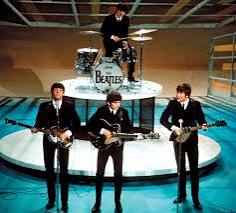 In the UK, the trad jazz movement has led many blues artists to visit the country. While developing the Concorde, Lonnie Donegan’s 1955 hit “Rock Island Line” was a major influence and helped to spawn a new trend of skiffle music groups across Britain, including the Beatles. It was on British soil that a great rock and roll scene developed, without the racial barriers that kept “race recordings” or rhythm and blues separate in the United States.By the end of 1962, the British rock scene had gained groups like The Beatles leaning on a wide range of influences that included soul music, rhythm and blues and surf music. These groups ended up introducing originality, distinct sound and increasingly complex musical concepts in their compositions. By mid-1962, the Rolling Stones were one of a number of groups to emerge that showed an increasing blues influence, along with the Animals and the Yardbirds. In late 1964, the bands The Kinks, The Who and The Pretty Things. Towards the end of the decade, British rock groups influenced by the Mod and Hippie subcultures began to explore psychedelic musical styles.
In the UK, the trad jazz movement has led many blues artists to visit the country. While developing the Concorde, Lonnie Donegan’s 1955 hit “Rock Island Line” was a major influence and helped to spawn a new trend of skiffle music groups across Britain, including the Beatles. It was on British soil that a great rock and roll scene developed, without the racial barriers that kept “race recordings” or rhythm and blues separate in the United States.By the end of 1962, the British rock scene had gained groups like The Beatles leaning on a wide range of influences that included soul music, rhythm and blues and surf music. These groups ended up introducing originality, distinct sound and increasingly complex musical concepts in their compositions. By mid-1962, the Rolling Stones were one of a number of groups to emerge that showed an increasing blues influence, along with the Animals and the Yardbirds. In late 1964, the bands The Kinks, The Who and The Pretty Things. Towards the end of the decade, British rock groups influenced by the Mod and Hippie subcultures began to explore psychedelic musical styles.
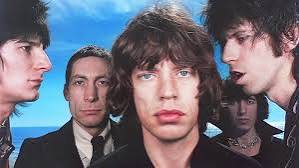 The folk scene was made up of folk music lovers who liked acoustic instruments, traditional songs and blues with a socially progressive message. Bob Dylan spearheaded the musical movement and brought songs such as “Blowin’ in the Wind” and “Masters of War” to large audiences, called “protest songs”. Dylan charted “Like a Rolling Stone” at the top of the Billboard North American Singles Chart. Neil Young’s inventive lyrics, coupled with the whine of his guitar, started a folk rock variation.
The folk scene was made up of folk music lovers who liked acoustic instruments, traditional songs and blues with a socially progressive message. Bob Dylan spearheaded the musical movement and brought songs such as “Blowin’ in the Wind” and “Masters of War” to large audiences, called “protest songs”. Dylan charted “Like a Rolling Stone” at the top of the Billboard North American Singles Chart. Neil Young’s inventive lyrics, coupled with the whine of his guitar, started a folk rock variation.
In England, the group Pink Floyd had been developing since 1965 psychedelic rock within the local underground culture.

In 1966, in August, the Beatles released Revolver, an album characterized by the psychedelia of the tracks “Tomorrow Never Knows” and “Yellow Submarine”, as well as the memorable cover of the album. At the same time, in the US, the Beach Boys “responded” with the LP Pet Sounds.
From a blues rock cultural background, Eric Clapton’s Cream group debuted in December and Jimi Hendrix was successful in British soil before returning to North American soil.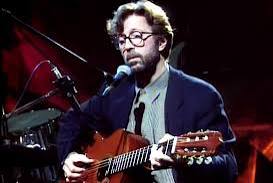 The psychedelic scene truly kicked in in 1967 with LP releases such as The Beatles’ Sgt. Pepper’s Lonely Hearts Club Band and The Stones’ Their Satanic Majesties Request, as well as self-titled debut albums by The Doors and Jefferson Airplane. With the Summer of Love reaching its peak, the Monterey Pop Festival highlighted Jefferson Airplane performances and featured Janis Joplin and Jimi Hendrix.
The psychedelic scene truly kicked in in 1967 with LP releases such as The Beatles’ Sgt. Pepper’s Lonely Hearts Club Band and The Stones’ Their Satanic Majesties Request, as well as self-titled debut albums by The Doors and Jefferson Airplane. With the Summer of Love reaching its peak, the Monterey Pop Festival highlighted Jefferson Airplane performances and featured Janis Joplin and Jimi Hendrix.
The height of this trend of big rock festivals was the 1969 Woodstock Festival. Bands from Los Angeles’s Paisley Underground culture also stood out in this post-decade scene.
Progressive rock bands went beyond the established formulas within rock and began to experiment with different instruments, types of songs and musical forms.
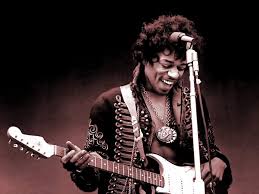
Some bands like The Beatles, Eric Burdon & The Animals, The Doors, Pink Floyd, Moody Blues and Procol Harum have experimented with new instruments and have included sections with wind instruments and orchestras. Many of these bands have moved from conventional three-minute songs towards longer compositions, with increasingly sophisticated chords.
A second wave of rock bands from the UK and US became popular during the early 1970s. Groups like Nazareth, Grand Funk Railroad, Led Zeppelin, Kiss, Deep Purple, Queen, Alice Cooper, Judas Priest, Status Quo , Aerosmith, Black Sabbath and Uriah Heep; from Australia, AC/DC vines; from Germany, Scorpions and, from Canada, Rush.
They intensified their playing, driving their guitars towards hard rock. The records helped usher in an era of rock’s greater commercialization established outside of Los Angeles. After this “glam side” of metal came to the fore, bands like Iron Maiden, Def Leppard, Saxon, Metallica, Slayer, Megadeth and Anthrax led metal to its original scene, which came to be called heavy metal.
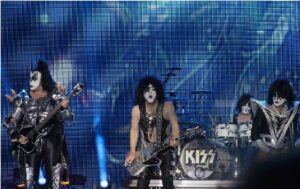 The origins of arena rock can be found in the great concerts of bands such as Kiss, The Beatles, The Rolling Stones, Led Zeppelin, The Who and Black Sabbath who “created the foundation for live performances in major stadiums and arenas around the globe.
The origins of arena rock can be found in the great concerts of bands such as Kiss, The Beatles, The Rolling Stones, Led Zeppelin, The Who and Black Sabbath who “created the foundation for live performances in major stadiums and arenas around the globe.
The style itself, however, was created by artists such as Boston, Styx, Foreigner, Journey, Queen, Kansas, Peter Frampton and – in their “Phil Collins era” – Genesis.These groups would continue to pack the biggest stadiums in the world during most of the 1970s and beyond helped to popularize the rock arena in the 1980s.
That popularity peaked in the first half of the 1980s, with bands such as Heart, REO Speedwagon, Cheap Trick, Asia, Bon Jovi, Kiss, Aerosmith, Guns N’ Roses and Van Halen, who “stayed at the height of their popularity, selling millions of records”.
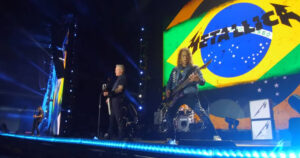 At that time, arena rock’s popularity only seemed to grow, but the sub-genre declined and lost adherents to alternative rock and grunge for many reasons, including “style limitations”.
At that time, arena rock’s popularity only seemed to grow, but the sub-genre declined and lost adherents to alternative rock and grunge for many reasons, including “style limitations”.
Punk rock lyrics are typically outspoken and confrontational compared to other popular music genres and often address social and political issues.
Punk rock attracted devotees within American art schools. Soon there were bands with more literate and artistic approaches, such as Talking Heads and Devo, which began to infiltrate the punk scene. For these bands, the term post-punk was created, and for the others that only flirted with pop, it was called New Wave.
In the 1980s, popular rock diversified. This period also saw a New Wave of British Heavy Metal gain popularity with bands such as Iron Maiden and Def Leppard. The first half of that decade saw Eddie Van Halen make musical innovations with the guitar, while vocalists David Lee Roth (of Van Halen) and Freddie Mercury (of Queen, as he had done throughout the 1970s) were at the forefront. of the most performing artists.
The first alternative rock bands – R.E.M., The Feelies and Violent Femmes – combined their punk influences with others from folk music and mainstream (commercial) rock. Of these, R.E.M. was the most immediately successful; their 1983 debut album “Murmur” topped the Billboard Top 40 and inspired a slew of followers, the jangle pop bands.